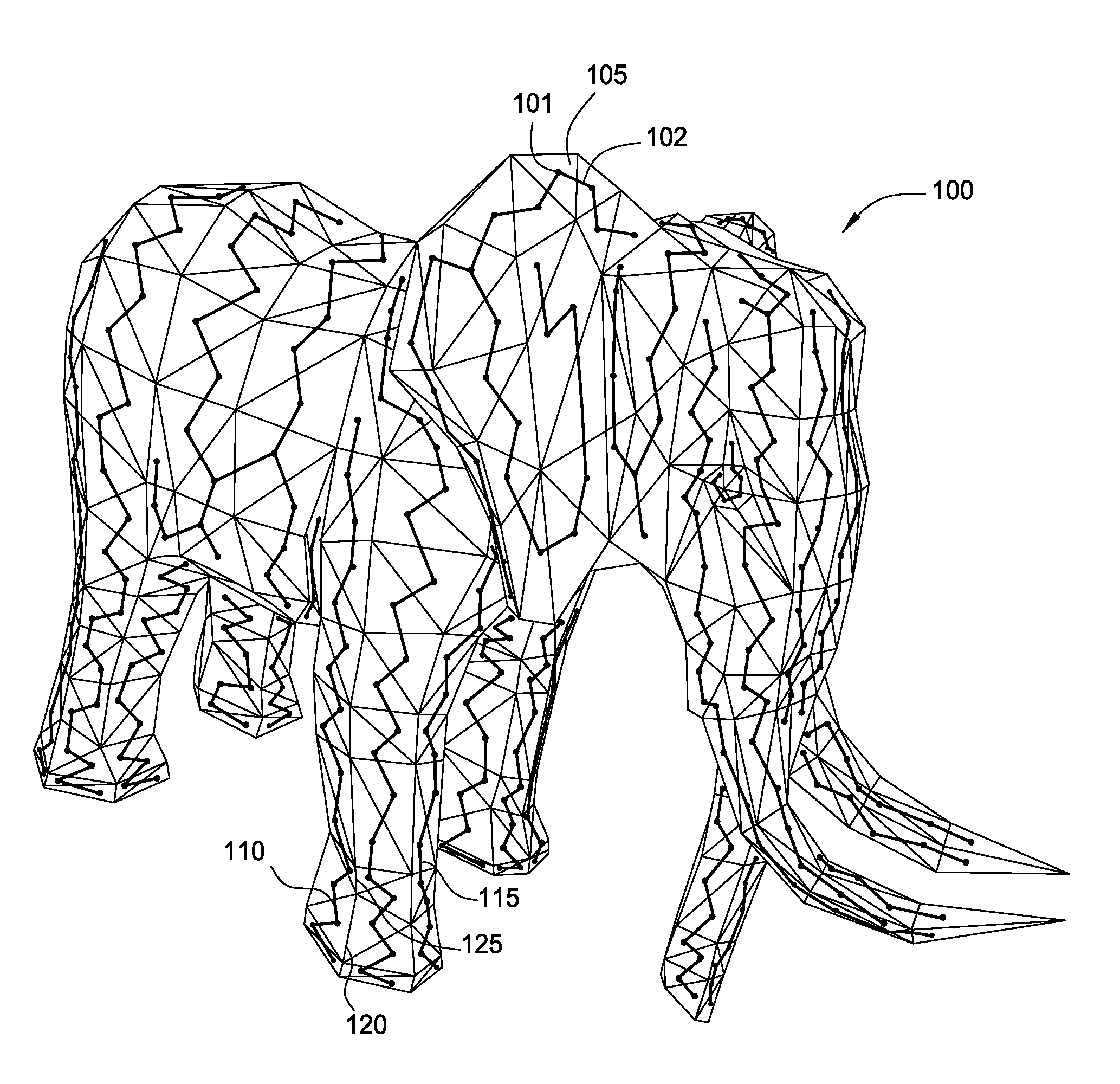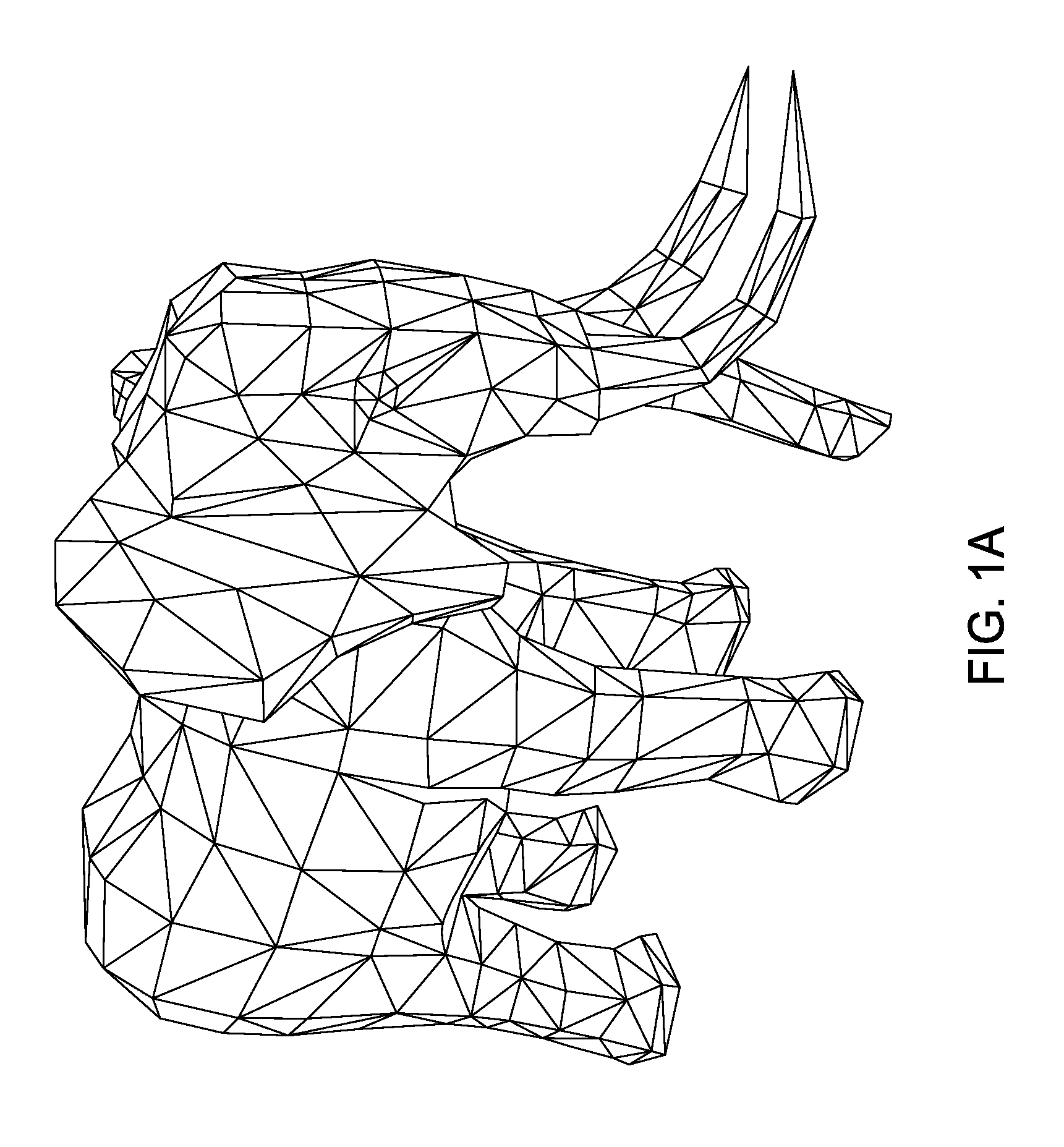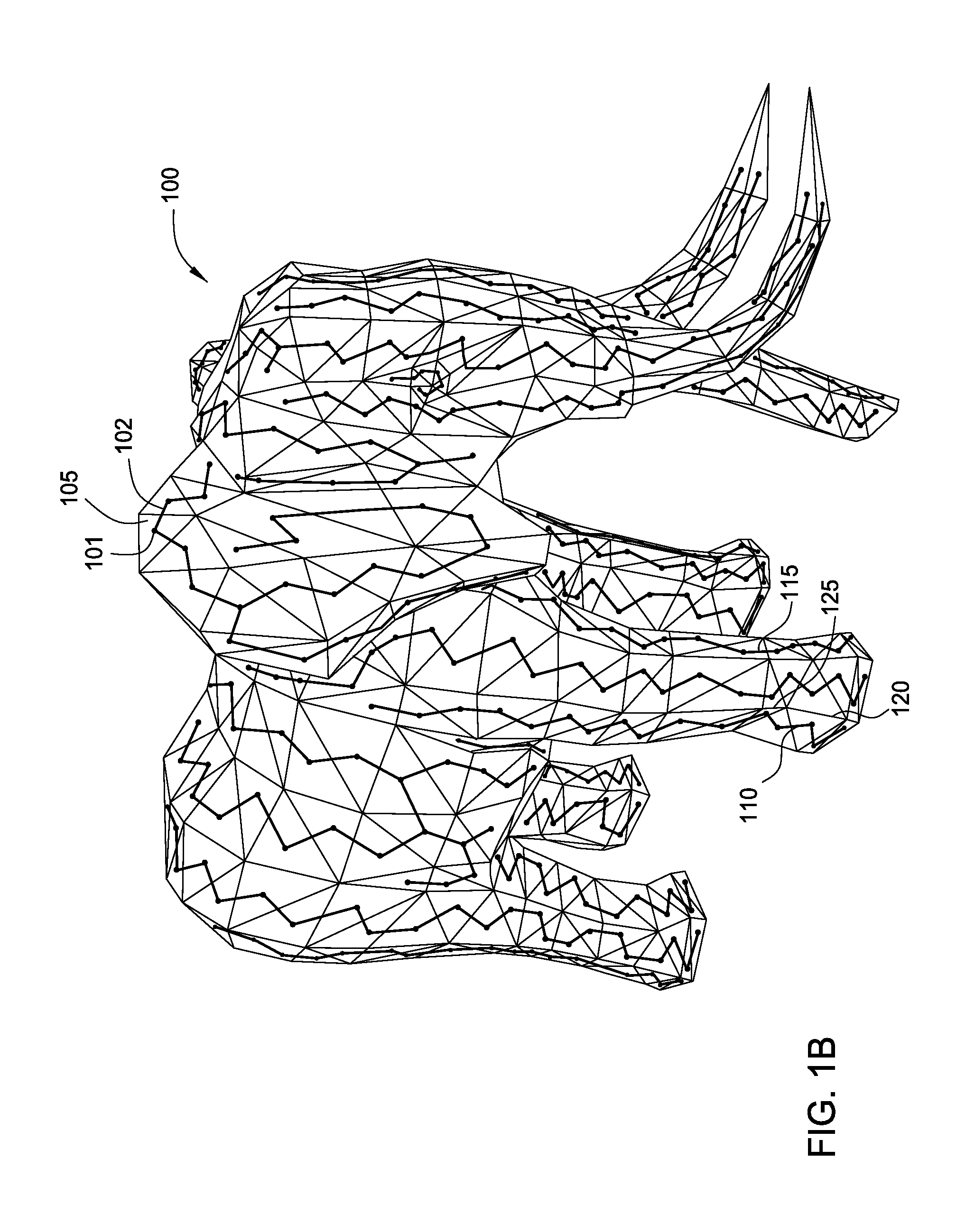Surfacing algorithm for designing and manufacturing 3D models
a technology of surface algorithm and 3d model, applied in the field of computer aided design and computer aided manufacturing, can solve problems such as engaging in trial and error processes
- Summary
- Abstract
- Description
- Claims
- Application Information
AI Technical Summary
Benefits of technology
Problems solved by technology
Method used
Image
Examples
Embodiment Construction
[0021]Embodiments presented herein provide techniques for decomposing three-dimensional (3D) geometry into an assemblable collection of two-dimensional (2D) panels. Importantly, the 3D geometry is automatically encoded into the panels, allowing the 3D geometry to be recreated simply by joining the panels at the appropriate seams and creating the appropriate bends / folds in each panel. For example, each panel has edges, vertices, and faces which can be algorithmically encoded, resulting in an assembly process resembling a “paint by numbers” approach. In particular cases, the assembly process is geometrically encoded into the components such that they can only assemble into the “correct” target 3D geometry, e.g., in cases where the only compatible seams for joining any pair of panels are the correct ones. These cases may be used to design and manufacture puzzles provided as a set of 2D panels, where the goal of the puzzle is to discover the unique joining of the panels that results in ...
PUM
 Login to View More
Login to View More Abstract
Description
Claims
Application Information
 Login to View More
Login to View More - R&D
- Intellectual Property
- Life Sciences
- Materials
- Tech Scout
- Unparalleled Data Quality
- Higher Quality Content
- 60% Fewer Hallucinations
Browse by: Latest US Patents, China's latest patents, Technical Efficacy Thesaurus, Application Domain, Technology Topic, Popular Technical Reports.
© 2025 PatSnap. All rights reserved.Legal|Privacy policy|Modern Slavery Act Transparency Statement|Sitemap|About US| Contact US: help@patsnap.com



